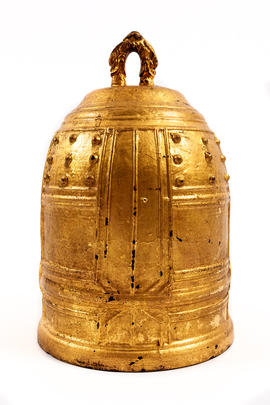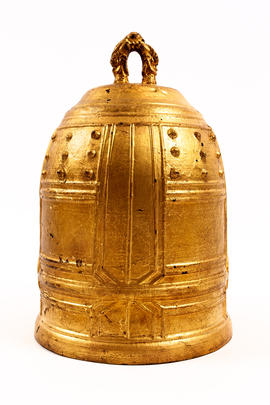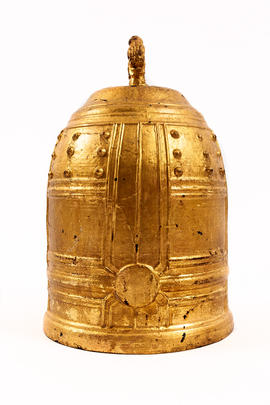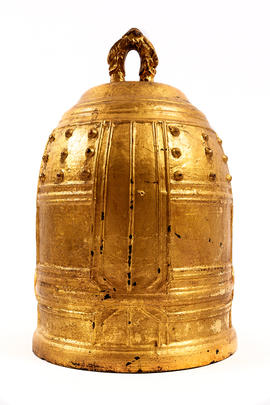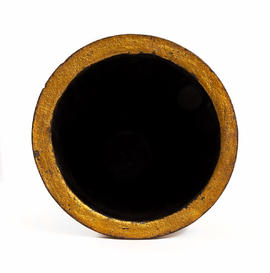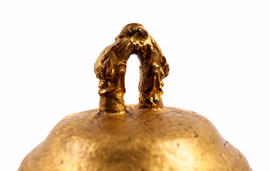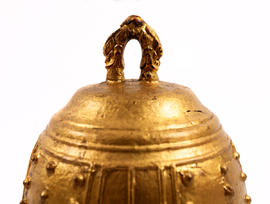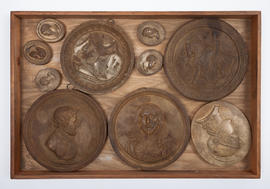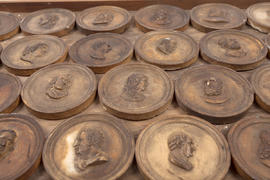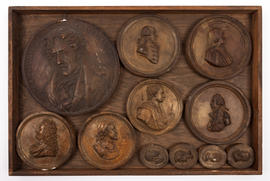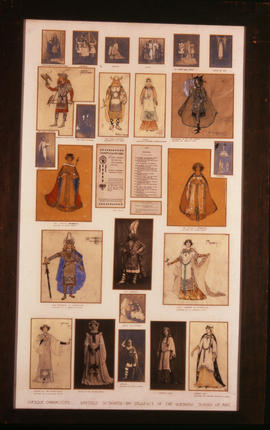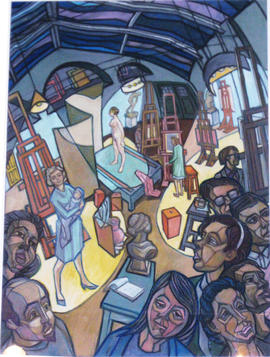Various correspondence of Francis Newbery, and relating to Francis Newbery. Some correspondence dates from his time as Director of the School but other correspondence dates to after Newbery's retirement. Most of the correspondence is Newbery's but some is from the School Secretary or others connected with the School of Art. The letters include correspondence with artists, writers and architects such as: William Morris, Charles Francis Annesley Voysey, P Wilson Steer, David Young Cameron, Auguste Rodin, John Lavery, Walter Crane, and H.G. Wells. Correspondence as follows: DIR/5/38/1/1: Letters from William Morris to Mr Mavor, 1889 (4 letters): (a) Letter about Morris visiting Glasgow to give a lecture and about his travelling expenses,14 Jan 1889 (1 sheet). (b) Letter about a series of lectures Morris was to give upon his visit to Glasgow to groups such as 'the Glasgow Branch of the S. L.' , the students of the School of Art, and the Edinburgh Socialists, 21 Jan 1889 (1 sheet). (c) Letter addressed 'Dear Sir' about lectures Morris plans to deliver on his visit: 'Arts & Crafts', and 'Gothic Architecture' for the Haldane Students, 24 Jan 1889 (1 sheet). (d) Letter about Morris' travel arrangements to Glasgow, 06 Feb (1 sheet). DIR/5/38/1/2: Postcard, perhaps from T. P. C..(?) of 146 Blythswood Drive (portion of postcard damaged) to Francis Newbery about an engraving of a brooch found at Duncan Keith's auction rooms, called 'The Macgregor Brooch', 14 Mar 1896 (1 item). DIR/5/38/1/3: Letter from Edward J Poynter to Newbery conveying thanks for Newbery's congratulations on Poynter's election, 04 Dec 1896 (1 sheet). DIR/5/38/1/4: Letter from John Lavery to Newbery about his seeing Newbery's paintings at an exhibition in Venice,18 May 1897 (1 sheet). DIR/5/38/1/5: Letters from Walter Crane to Newbery, 1897-1913 (3 letters): (a) Letter to Mr & Mrs Newbery thanking them for their hospitality during his short stay, 12 Dec 1897 (1 sheet). (b) Letter to Newbery thanking Newbery for his kind letter on Crane's appointment, 28 Aug 1898 (1 sheet). (c) Letter to Newbery thanking Newbery and his wife for their hospitality during his visit, 12 Jun 1913 (1 sheet). DIR/5/38/1/6: Letters from staff to Newbery requesting an increase in salary, 1898 (5 letters): (a) Letter from John Dunlop, 12 Sep 1898 (1 sheet). (b) Letter from James M Dunlop, 13 Sep 1898 (1 sheet). (c) Letter from A Aston Nicholas, 15 Sep 1898 (1 sheet). (d) Letter from Johan Keller, 17 Sep 1898 (1 sheet). (e) Letter from James Gray, 19 Sep 1898 (1 sheet). DIR/5/38/1/7: Draft letter to Mr R S Allan about classes at the School, c1900 (3 sheets). DIR/5/38/1/8: Correspondence to Newbery about a fire escape stair, 1900 (2 letters): (a) Letter from W Forrest & Salmon cover letter returing documents sent by Newbery concerning a proposed escape stair, 07 Dec 1900 (1 sheet). (b) Letter to Honeyman & Keppie from Robert Scott, Measurer & Valuator about the cost of a fire escape stair for the Glasgow School of Art, 01 Aug 1900. Enclosure of the above (1 sheet). DIR/5/38/1/9: Letters from Auguste Rodin to Newbery, 1901-1903 (2 letters): (a) Letter, in French, about the return of plaster casts to Rodin and about an exhibition of plaster casts, 29 Apr 1901 (1 sheet). (b) Letter, in French, thanking Newbery for his kind wishes, 11 Dec 1903 (1 sheet). DIR/5/38/1/10 Correspondence between Newbery and Vanderstappen about proposing Mr Delville and Mr Paul Artot as Professors at the School, 1902 (4 letters). DIR/5/38/1/11: Letter and transcription of letter from William Leiper, Architect, to Newbery, 1904-1905 (2 letters): (a) Letter from Leiper to Newbery congratulating Newbery on the work of the School observed by Leiper on a recent visit, 13 Dec 1904 (1 sheet). (b) Typed transcript of the above letter from William Leiper to Newbery, 13 Dec 1904. Also on this sheet is a typed transcript of a letter from Alexander Roche to Newbery about an enclosed cheque for a supplementary travelling studentship, 22 May 1905 (1 sheet). DIR/5/38/1/12: Letter from W Forrest Salmon of Salmon & Son & Gillespie Architects to E Catterns, School Secretary, apologising that Salmon will be unable to attend the next Governors' meeting and recording his thoughts on some business such as his support for the re-election of W Fleming to the Chair, 26 Sep 1906 (1 sheet). DIR/5/38/1/13: Letter from George Gregory to Newbery about arrangements for Mr Wilson's class coming to 'modelling' (the sculpture department), 12 Oct 1906 (1 sheet). DIR/5/38/1/14: Correspondence about a letter to Newbery from Sir Henry Craik, Oct 1906 (2 letters): (a) Letter from Newbery to James Fleming requesting Fleming to telephone him to discuss an enclosure. On the back is a draft reply to the enclosure that Newbery wishes to discuss with Fleming (see below for enclosure), Oct 1906 (1 sheet). (b) Letter from H Craik to Newbery enquiring about the possibility of a position for a 'W Kennaway' who was at the Athenaeum School of Art in Glasgow until it closed. (enclosure of above correspondence), 23 Oct 1906 (1 sheet). DIR/5/38/1/15: Correspondence with Mr Robertson Weir, 1909-1919 (3 letters): This correspondence was donated to the School of Art Archives and Collections by the daughter of Robertson Weir in 1994. (ACC 52) (a) Letter from Newbery to Robertson Weir about Weir's trasmission to the Scotch Education Department. Refers to the course of study and Training of Teachers in the Special Subject of Art (Article 47), 04 Nov 1909 (1 sheet). (b) Letter from Newbery to Robertson Weir expressing his relief that Weir survived the War, 19 May 1919 (1 sheet). DIR/5/38/1/16: Letter from J Struthers of the Scotch Education Department to Newbery about the possible uses of the bursary of a student Mr Alexander Gordon, 28 Jul 1910 (2 sheets). DIR/5/38/1/17: Letter from H G Wells to Newbery thanking him for sending a copy of the Art School 'Masque', 10 Jun 1927 (1 sheet). DIR/5/38/1/18: Letters from Charles Francis Annesley Voysey to Newbery, 1927-1931 (2 letters): (a) Letter about a letter Newbery sent to 'MacAlister' that was flattering to Voysey and thanking Newbery for his support, 15 Nov 1927 (1 sheet). (b) Letter to Mr and Mrs Newbery apologising for having missed them when they went to his show and asking them if they have ever visited Sir Herbert Cook who lives in a house built by Voysey for Alfred Sutro, 05 Oct 1931 (1 sheet). DIR/5/38/1/19: Letter from P Wilson Steer to Newbery thanking Newbery for his congratulations and reminiscing about Walberswick, 19 Jan 1931 (1 sheet). DIR/5/38/1/20: Letter from D. Y. Cameron to Mr & Mrs Newbery thanking them for their sympathy on the death of his partner, c1930s (1 sheet). DIR/5/38/1/21: Letter from Archibald A McGlashan to 'Alick' thanking Alick for sending a painting of Francis Newbery and reflecting on the character of Newbery, 03 May 1947 (1 sheet).

